How to Get a Male Dog to Pee All at Once? [Fixes]
Getting a male dog to urinate all at once can be quite a challenge for pet owners. If you’ve ever found yourself wishing for a magic wand to make your dog “do his business” in one go, you’re not alone. But fear not, fellow dog enthusiasts, there is hope!
In this article, we will explore proven techniques to help train your male canine companion to empty his bladder more efficiently during potty breaks. No more frustrating moments in the cold or rain waiting for Fido to finish up.
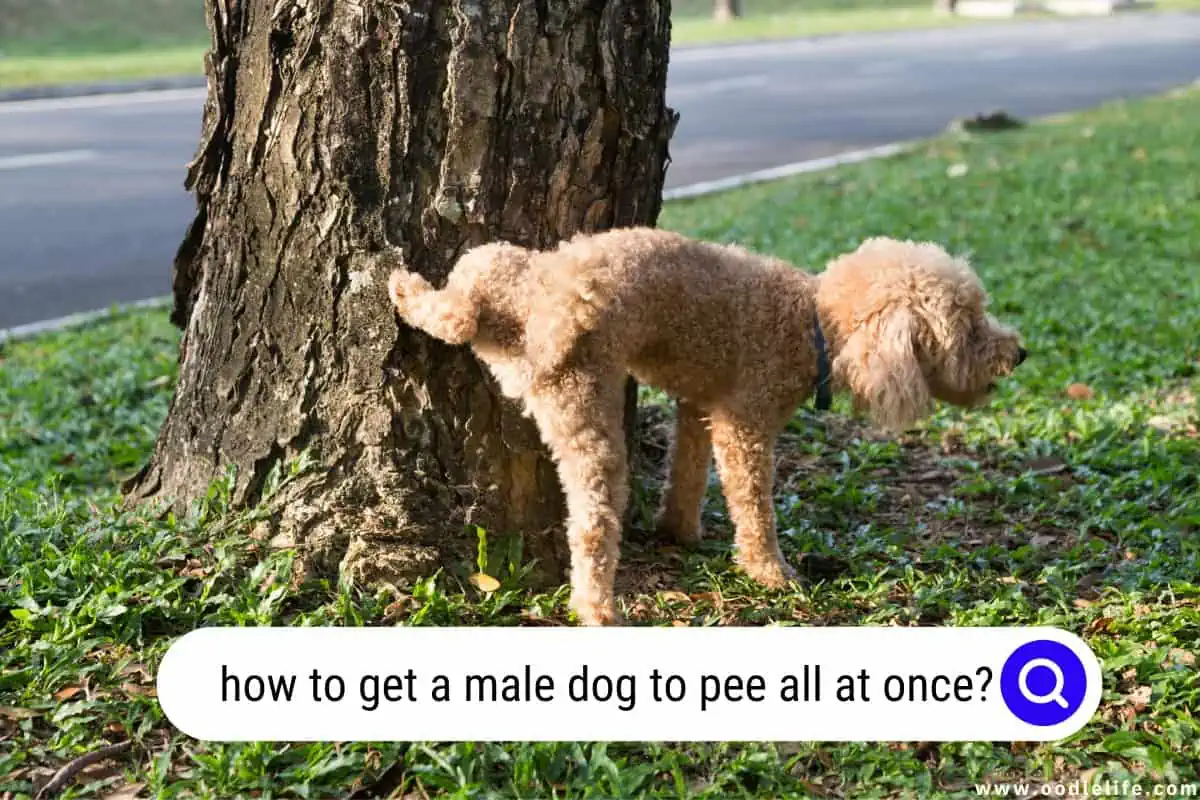
So, let’s dive in and turn these puddle-procrastinators into pee professionals!
Understanding Male Dog Urination Behavior
Male dogs have a unique urination behavior, often not emptying their bladders in one go. Instead, they like to save some urine for marking their territory during walks, an instinct deeply rooted in their need to communicate with other dogs and establish dominance.
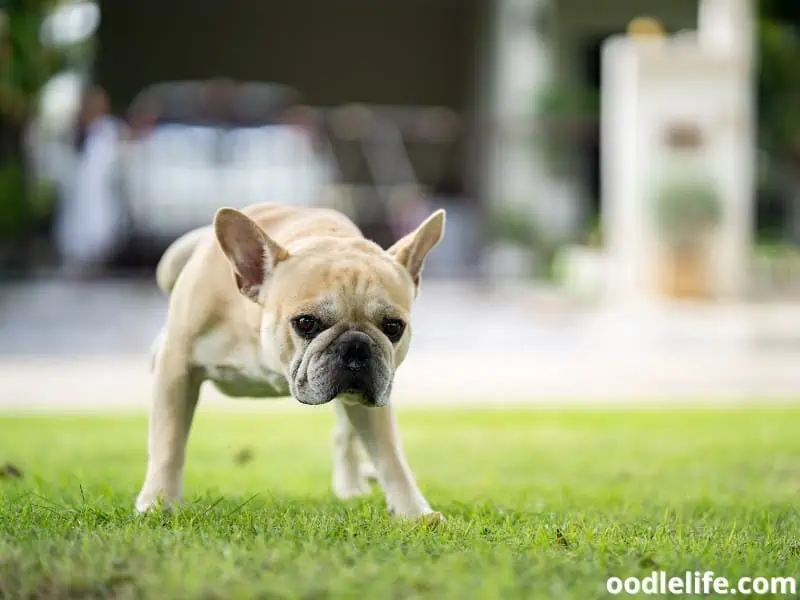
It’s essential to note that this behavior is not deliberate disobedience but rather an evolutionary trait. Urine marking helps a dog assert its presence, claim territory or objects, and communicate information such as reproductive status or hierarchical position.
When dealing with a male dog’s urination habits, patience and understanding of their instinctive needs are crucial. Owners should consider providing dedicated spots for their dogs to pee, preferably somewhere with minimal distractions. Familiar surroundings and consistent routines can help dogs feel comfortable and finish their business more quickly.
Fostering a sense of security and discouraging marking behavior is also important for reducing unwanted indoor accidents or excessive marking while out on walks. Some ways to achieve this include:
- Neutering: This can reduce hormone-driven marking behaviors, especially when done before maturity.
- Training: Establish a consistent bathroom routine and use commands like “go potty” to encourage your dog.
- Positive reinforcement: Reward your dog for doing their business in designated areas with praise or treats.
Understanding male dog urination behavior can make it easier to navigate the challenges and find strategies that encourage your furry friend to empty their bladder more efficiently. After all, dogs will be dogs, and sometimes their quirks are just part of their charm.
Significance of Training
Teaching a male dog to pee all at once can not only simplify cleanup, but also prevent unwanted marking behavior. Proper training can help maintain a cleaner environment and avoid awkward glances from strangers during walks.
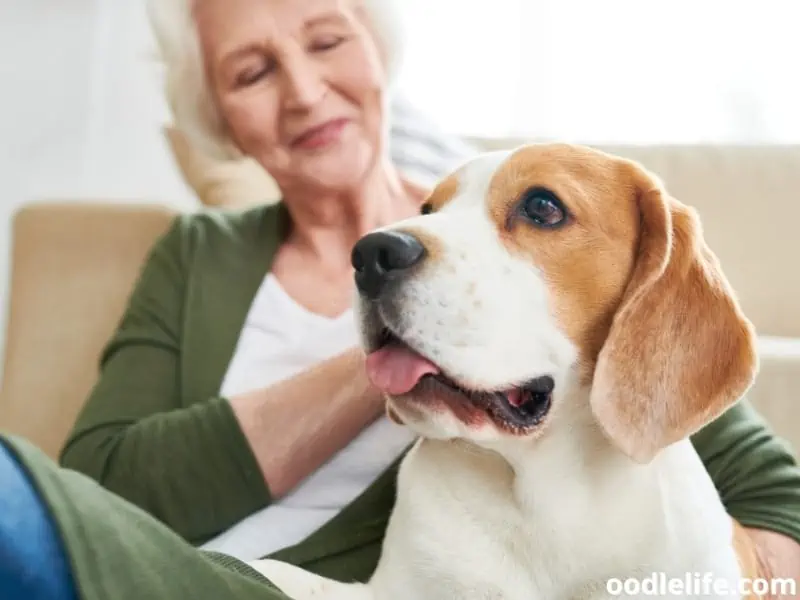
Consistency is key when training any dog. Setting up a fixed routine, such as designated times for pee breaks, signals to your dog that certain actions are expected at certain times. For example, if you always give your dog a chance to relieve himself before and after a walk, he’ll be more likely to understand and comply with your expectations.
Urination for dogs serves a dual purpose: elimination and marking. By addressing the marking issue through training, you can actively reduce undesirable behaviors associated with scent marking.
In a nutshell, the significance of training your male dog to pee all at once involves cleanliness, appropriate marking, and improved daily routines.
Setting Up a Training Schedule
Training your male dog to pee all at once starts with creating a consistent and effective schedule. Taking the time to establish a routine will help your dog understand when it’s time to empty his bladder and make the process smoother for both of you.
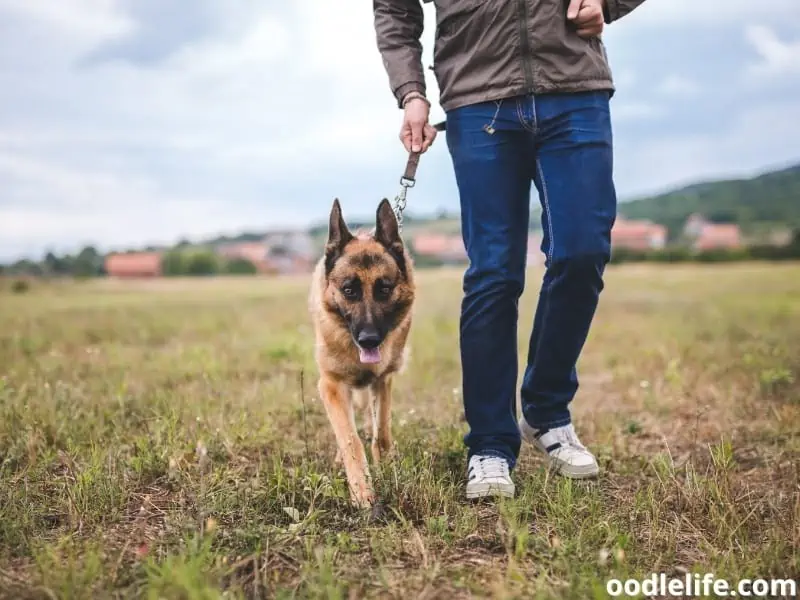
Frequency and Timing
First, assess your dog’s typical schedule to determine the best times for potty breaks. Some high-impact moments include after meals, after playtime, and before bedtime. Consider taking your dog out for potty breaks every few hours, gradually increasing the time between breaks as he gets better at holding his bladder.
It’s also vital to choose a designated spot for your dog to pee outside. Consistently bringing him to the same spot will help reinforce the habit, making it easier for him to understand the purpose of the outing.
Consistency
Consistency is key when training your dog to pee all at once. Stick to the established schedule, and make sure everyone in the household is on board. This will help your dog better understand what is expected of him during each potty break.
Utilize positive reinforcement, such as treats, praise, or a quick game, to reward your dog for successfully peeing all at once. Over time, this will encourage him to continue doing so and create a strong association between the designated spot and the act of peeing.
Training Techniques
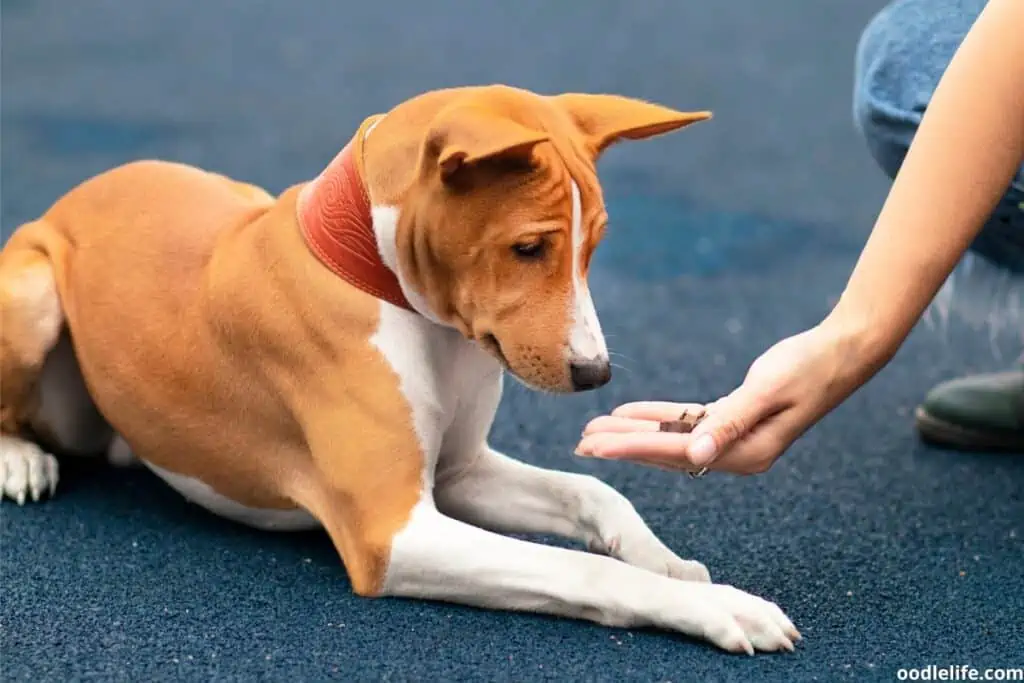
Positive Reinforcement
Positive reinforcement involves rewarding your dog immediately after they successfully pee all at once. It helps establish a strong association between the desired behavior and the reward.
Using treats or praise as a reward will encourage your dog to continue this behavior. Be consistent and patient during this process for the best results.
Special Commands
Teaching your dog a specific command to pee, such as “go potty,” can help communicate your expectations. Ensure you use the command consistently every time your dog is taken outside to pee. Once your dog associates the command with the action, they’ll understand what’s expected of them.
Interrupting Unwanted Behavior
When you catch your dog peeing in short bursts or marking territory, interrupt the behavior with a firm, but gentle, vocal cue. This will help redirect their attention and encourage them to pee all at once.
Stay calm and avoid scolding your dog, as this may create fear or confusion.
Proper Supervision
Keep an eye on your dog, especially during potty breaks, to ensure they’re peeing all at once. Maintaining a routine for breaks will help set clear expectations and create an environment where your dog feels comfortable to completely empty their bladder.
Remember, consistency and patience are key to achieving success in this training.
Discouraging Marking Behavior
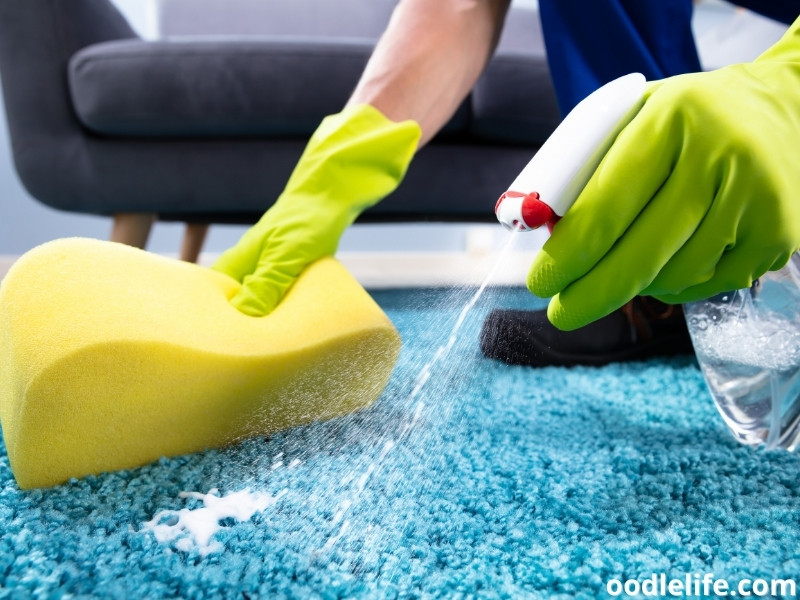
Neutering
Neutering your male dog can often help reduce marking behavior, as it decreases the levels of hormones responsible for the urge to mark territory. Studies have shown that neutering can reduce urine marking by up to 50 to 60 percent, especially if done at an early age.
Cleaning Marking Spots
To discourage your dog from marking in the same spots, it’s important to clean these areas thoroughly using a commercial pet odor remover. Dogs are more likely to mark spots where they have marked before or where they can smell their own odor. By using an enzymatic pet stain remover, you can break down the odor-causing compounds and deter your dog from marking that spot again.
Limiting Exposure to Triggers
Some dogs may mark their territory in response to certain triggers, such as new objects, changes in the environment, or the presence of other animals. You can reduce marking behavior by limiting your dog’s exposure to such triggers. For example, block access to areas where your dog tends to mark, or introduce new items gradually to avoid sudden environmental changes.
Incorporating a combination of neutering, cleaning marked spots, and limiting exposure to triggers can effectively help discourage marking behavior in your male dog. By being consistent and persistent, you’ll have a much better chance of getting your dog to pee all at once, rather than leaving little “messages” all over your home.
Addressing Health Issues
There can be various underlying health issues that may affect a dog’s ability to pee all at once. These issues need to be addressed to ensure your dog’s overall well-being.
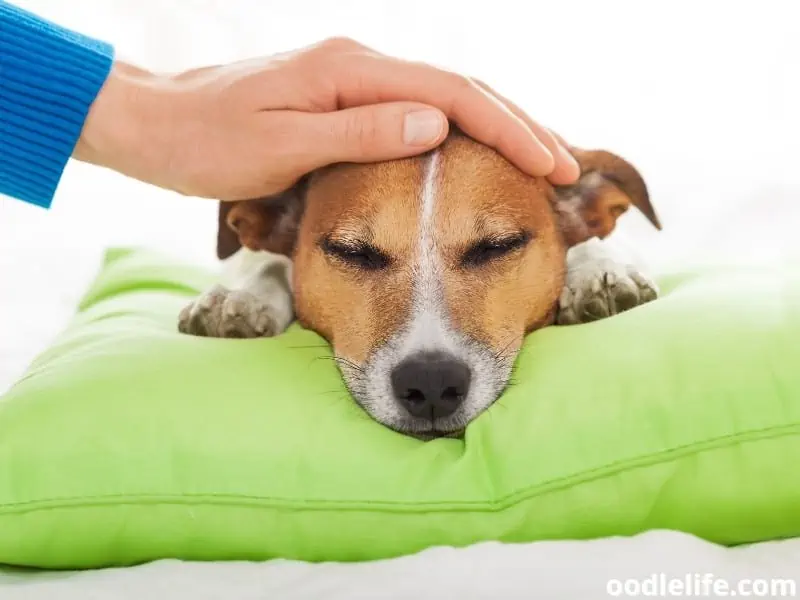
Urinary Tract Infections
Urinary Tract Infections (UTIs) can make it painful for a dog to urinate, causing them to hold in their urine or release it in small amounts. Symptoms include frequent urination, bloody or cloudy urine, and licking the genitals. If you suspect a UTI, consult your veterinarian for proper diagnosis and treatment.
Bladder Stones
Bladder stones can obstruct the flow of urine, making it difficult for your dog to empty their bladder completely. Signs of bladder stones include straining to urinate, frequent attempts to pee, and sometimes blood in the urine. It’s important to get your dog checked by a vet if you suspect bladder stones, as they may require treatment or even surgery.
Other Medical Conditions
Other medical conditions, such as kidney disease, diabetes, or hormonal imbalances, can affect your dog’s urination habits. These conditions require proper diagnosis and treatment from a veterinarian to help regulate your dog’s urination and improve their overall health.
Consulting a Veterinarian
Always consult a veterinarian if you notice changes in your dog’s urination habits or if they’re having trouble peeing all at once. Early diagnosis and treatment will ensure your furry friend’s health remains in tip-top shape and avoids complications. Remember, a healthy dog is a happy dog!
Monitoring Progress
Throughout the training process, keeping track of your dog’s progress is essential for continuous improvement.
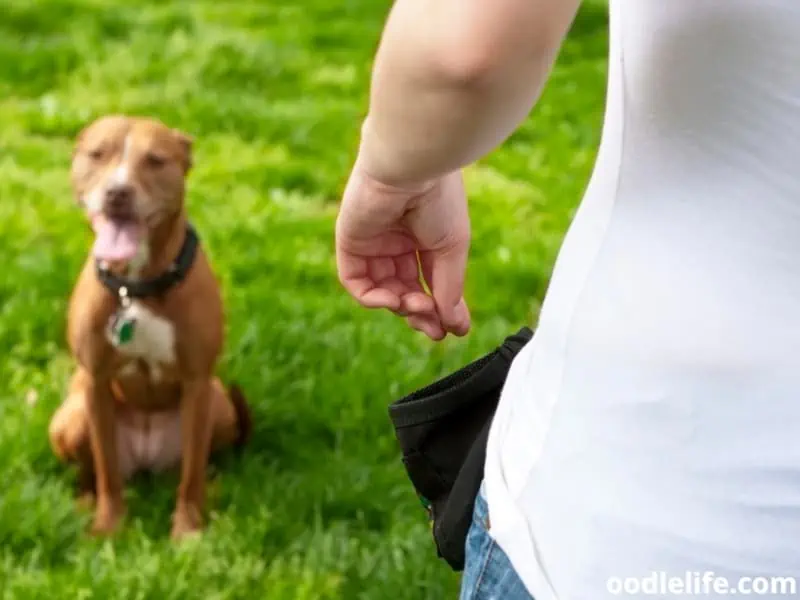
Adjusting Training Methods
Observing your dog while training is crucial. Depending on how well they are following instructions, you may need to adjust your training techniques. Don’t hesitate to experiment with different methods until you find the one that works best for your furry friend.
Maintaining Patience
Training a dog to pee all at once can be an uphill task that requires a lot of patience. Understand that setbacks and accidents may happen, but staying patient and consistent in your approach will play a significant role in your dog’s eventual success.
Celebrating Success
Lastly, don’t forget to celebrate small victories in your dog’s progress. Rewarding them with treats or praise for successfully urinating all at once can further reinforce the desired behavior, making the training process more effective and enjoyable for both you and your dog.